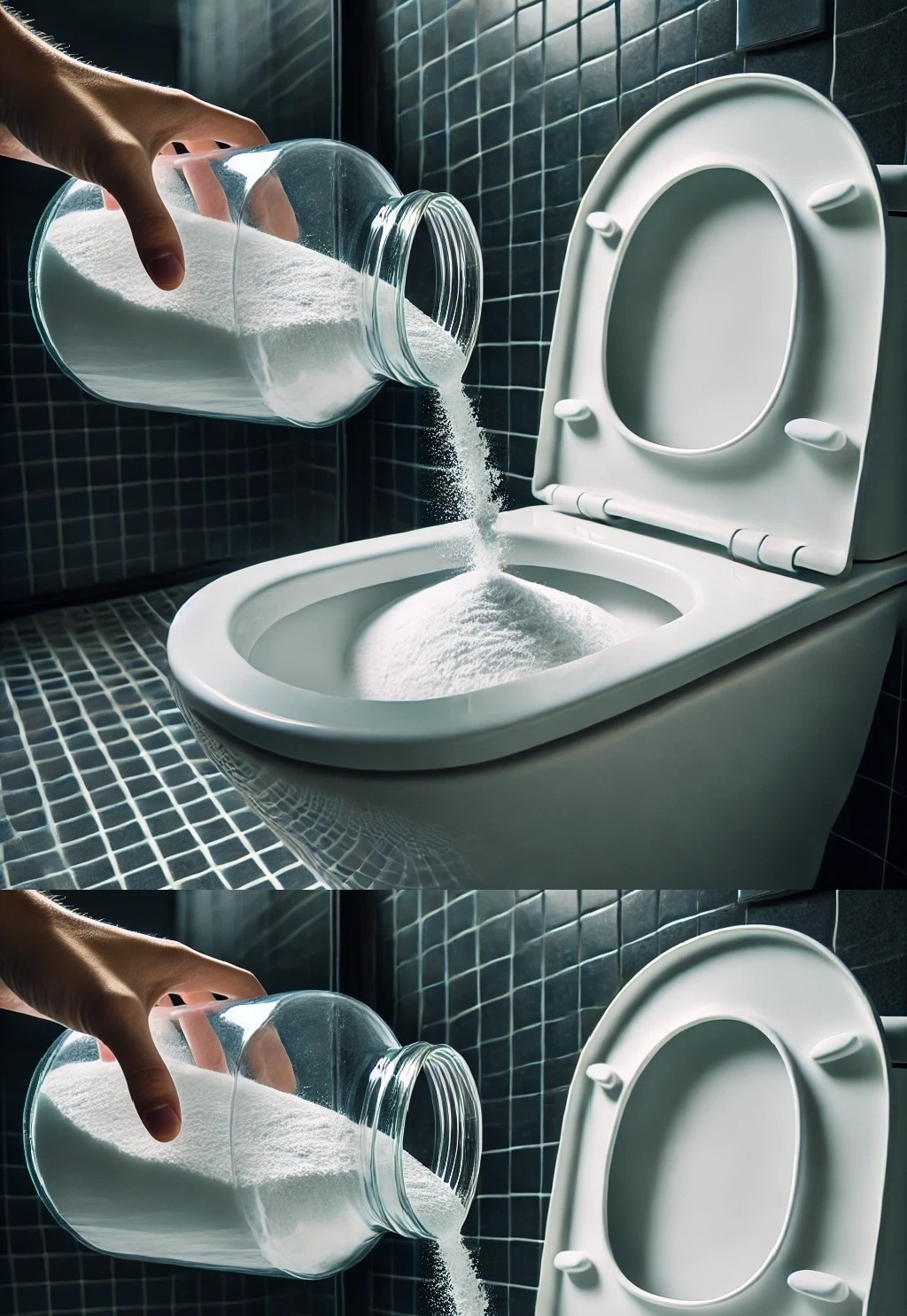ADVERTISEMENT
Step-by-Step Instructions:
- Turn Off the Water Supply: Before you start cleaning, it’s a good idea to turn off the water supply to your toilet. This step isn’t strictly necessary, but it can prevent the toilet from refilling while you’re cleaning and make it easier to see the limescale buildup.
- Empty the Toilet Bowl: Flush the toilet to remove as much water as possible from the bowl. You don’t need to dry the entire bowl, but lowering the water level will make it easier to work with the vinegar and target the areas with the most buildup.
- Pour Vinegar Into the Toilet Bowl: Pour about 2 cups of white vinegar into the toilet bowl, focusing on the areas with the most noticeable limescale. You can pour it directly onto the limescale buildup or spray it with a spray bottle for better coverage. Vinegar will begin to dissolve the mineral deposits almost immediately, but you’ll need to give it time to work its magic.
- Let It Sit: Allow the vinegar to sit in the bowl for at least 30 minutes to an hour. For heavy buildup, you can even let it sit overnight. The longer the vinegar has to work, the more effective it will be in breaking down the limescale.
- Scrub the Toilet: After the vinegar has had time to soak, grab your toilet brush and scrub the bowl, focusing on the areas with the most buildup. The vinegar should have loosened the limescale, making it much easier to scrub away. Use firm, circular motions to remove the deposits.
- Flush the Toilet: Once you’ve finished scrubbing, flush the toilet to rinse away the vinegar and any loosened limescale. You may want to repeat the process if there are any stubborn spots that didn’t come off on the first go.
- Optional: Wipe Down the Rest of the Toilet: For a finishing touch, wipe down the rest of the toilet with a vinegar-soaked cloth to keep it sparkling clean.
Other Tips for Tackling Limescale in Your Toilet:
- For Stubborn Stains: If limescale deposits are particularly thick or difficult to remove, try using baking soda in combination with vinegar. Sprinkle a generous amount of baking soda into the toilet bowl, then pour the vinegar on top. The fizzing reaction will help lift the stains and make scrubbing easier.
- Prevent Future Buildup: To prevent limescale from building up in the future, regularly clean your toilet with vinegar. You can even pour vinegar into the toilet bowl every week to help keep it fresh and free of mineral deposits. If you live in an area with hard water, regular vinegar treatments will go a long way in keeping limescale at bay.
- Use a Toilet Tank Cleaner: In addition to cleaning the toilet bowl, you can also pour vinegar into the toilet tank to prevent mineral deposits from accumulating there. This will help your toilet function more efficiently and prevent any future buildup in the pipes.
Why Vinegar is the Best Choice
- Non-Toxic: Unlike many commercial descalers and toilet cleaners, vinegar is completely safe and non-toxic. You don’t need to worry about any harmful chemicals or fumes that could be harmful to your health or the environment.
- Cost-Effective: Vinegar is an affordable household item that can be used for a wide variety of cleaning purposes, not just in the bathroom. It’s a budget-friendly solution compared to expensive chemical cleaners.
- Gentle on Plumbing: Commercial limescale removers can sometimes be too harsh on your toilet’s plumbing, but vinegar is gentle and safe for your pipes.
Final Thoughts: A Simple, Effective, and Natural Solution
If you’re tired of dealing with unsightly limescale buildup in your toilet, look no further than your kitchen cabinet. White vinegar is a natural, powerful, and eco-friendly descaler that can tackle tough limescale stains without the need for harsh chemicals. Whether you’re dealing with a few spots or a heavy layer of buildup, vinegar can help keep your toilet sparkling clean and functioning properly.
By using this easy and affordable trick, you’ll say goodbye to limescale for good—naturally!
ADVERTISEMENT
ADVERTISEMENT
